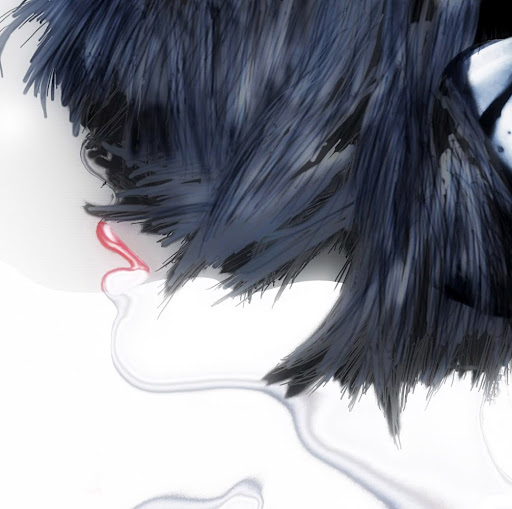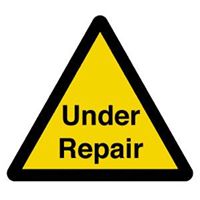Soren Sorensen
Deceased
from Escondido, CA
Soren Sorensen Phones & Addresses
- Escondido, CA
Specialities
Purchase Loan • Refinancing • Home Equity
Wikipedia

Soren Sorensen Adams
view sourceSoren Sorensen "Sam" Adams (May 24, 1879 October 20, 1963) was an inventor and manufacturer of novelty products, including the Joy Buzzer. ...
Resumes

Soren Sorensen
view sourceUs Patents
-
Toy-Building Elements For Variably Positional Toys
view source -
US Patent:7553209, Jun 30, 2009
-
Filed:May 17, 2005
-
Appl. No.:11/131830
-
Inventors:Soren Christian Sorensen - San Diego CA, US
-
International Classification:A63H 33/06
A63H 33/08 -
US Classification:446124, 446 85, 446127, 446128
-
Abstract:Toy-building elements including various combinations of the following features: a top having a broad surface and at least one projection or ball-shaped coupler extending above the broad surface; an interior having contact surfaces that are accessible through an open bottom and are adapted for effecting a releasable restraining engagement with an interconnectable projection or ball-shaped coupler on a second toy-building element; at least one sidewall including at least one groove for effecting a releasable restraining engagement with a tongue in a sidewall of another toy-building element; at least one sidewall including at least one tongue for effecting a releasable restraining engagement within a groove in a sidewall of still another toy-building element; and at least one sidewall including an axel-shaped or ball-shaped coupler for effecting a variably positional engagement with an interconnectable coupler in yet another toy-building element. These toy-building elements are combined with others to assemble person-like and vehicle-like toy figures.
-
Injection Molded Toy Building Element
view source -
US Patent:8105128, Jan 31, 2012
-
Filed:Feb 10, 2006
-
Appl. No.:11/351695
-
Inventors:Soren Christian Sorensen - San Diego CA, US
Jens Ole Sorensen - Rancho Santa Fe CA, US -
International Classification:A63H 33/12
-
US Classification:446128, 446122
-
Abstract:A toy building element includes side walls, a top having an upper surface that extends from the side walls, and a plurality of projections extending upward from the extensive upper surface, an open bottom and an interior. The interior is accessible through the open bottom for receiving a plurality of projections of another building element of a set of toy building elements. The interior includes a plurality of hollow members that extend downward from a respective portion of the extensive upper surface that is disposed between two of the projections; and the hollow members are open to the extensive upper surface. The hollow members partition the interior into regions in which a plurality of projections of another building element is received; and the regions of the building element are disposed directly below the projections of the same building element for receiving the projections of the other building element.
-
Toy-Building Elements Having Sidewall Grooves Formed Between Outwardly Extending Flexible Ridges
view source -
US Patent:8187050, May 29, 2012
-
Filed:Dec 4, 2009
-
Appl. No.:12/631067
-
Inventors:Soren Christian Sorensen - San Diego CA, US
-
International Classification:A63H 33/06
A63H 33/08 -
US Classification:446120, 446124
-
Abstract:A toy building element has sidewalls that include grooves and tongues by which the toy building element can be interconnected with a like building element. Each groove is formed between a pair of outwardly extending flexible ridges. The tongue does not extend outward beyond the virtual plane of the sidewall that includes the tongue. The virtual plane is defined as a plane that passes through a midpoint of a line that connects a central point on an outer surface of the sidewall that includes the at least one tongue to a central point on an outer surface of the sidewall of the other building element that includes the at least one pair of ridges and is perpendicular to a line that passes through the central points of said interconnected building elements when said building elements are interconnected in a centered configuration.
-
Rapid Injection Molding Of Elongated Articles, Such As Cable Ties
view source -
US Patent:53727738, Dec 13, 1994
-
Filed:Dec 20, 1991
-
Appl. No.:7/811576
-
Inventors:Soren C. Sorensen - San Diego CA
Jens O. Sorensen - Rancho Santa Fe CA -
International Classification:B29C 4540
B29C 4543 -
US Classification:2643281
-
Abstract:A nylon cable tie having a head and a strap terminating in a tip is formed in a mold cavity defined between a first mold part combined wish a second mold part by injecting molten nylon material into the mold cavity through an insulated runner system and a gate that converges from the runner system toward the mold cavity and does not have a hot tip adjacent thereto. The mold parts are separated while retaining a portion of the head in a head region in the first mold part and a portion of the tip in a tip region in the second mold part, in order to separate the head from the second mold part, to separate the tip from the first mold part, and to separate a major portion of the strap from the first and second mold parts. The mold parts are further separated while retaining said portion of the head in the head region to thereby remove said portion of the tip from the second mold part. The head is ejected from the head region by protracted ejector pins that penetrate the head region from within the first mold part.
-
Method Of Rapid Injection Molding Of Elongated Articles, Such As Cable Ties
view source -
US Patent:6217813, Apr 17, 2001
-
Filed:May 31, 1994
-
Appl. No.:8/251385
-
Inventors:Soren Christian Sorensen - San Diego CA
Jens Ole Sorensen - Rancho Santa Fe CA -
Assignee:GB Electrical, Inc. - Milwaukee WI
-
International Classification:B29C 4544
-
US Classification:2643281
-
Abstract:In a method of injection molding an elongated article, such as a cable tie, having a head and a strap terminating in a tip, (a) the article is formed by injecting molten plastic material, such as nylon, into a mold cavity defined between a first mold part and a second mold part, wherein the first mold part includes a head region defining a portion of the head of the elongated article, the second mold part includes a tip region defining a portion of the tip of the elongated article, and the portion of the mold cavity defined by the second mold part defines a series of pointed teeth on one side of the strap; (b) the first mold part is separated from the second mold part while retaining the portion of the head of the elongated article in the head region of the first mold part and the portion of the tip of the elongated article in the tip region of the second mold part, thereby separating the head from the second mold part, the tip from the first mold part, and a major portion of the strap of the elongated article from both the first and second mold parts; and (c) the first mold part is further separated from the second mold part while retaining said portion of the head of the elongated article in the head region of the first mold part to thereby remove the portion of the tip of the elongated article from the second mold part.
-
Injection Molding Of Cable Ties With A Mold Having An Enhanced Core Section
view source -
US Patent:54407869, Aug 15, 1995
-
Filed:Jun 4, 1993
-
Appl. No.:8/071474
-
Inventors:Soren C. Sorensen - Solana Beach CA
Jens O. Sorensen - Rancho Santa Fe CA -
International Classification:B65D 6300
-
US Classification:24 16PB
-
Abstract:A cable tie that includes an elongated tongue with two ends and two broad sides, a locking head at one end of the tongue, a tip at the other end of the tongue, and a set of ratchet teeth extending along one broad side of the tongue, wherein the locking head has sides defining an opening for receiving the tip of the tongue, the sides including a movable pawl that is hinged at one side of the opening and an abutment surface that is at least in part directly opposite across the opening from the pawl, and wherein the pawl has at least one pawl tooth disposed for engaging the set of ratchet teeth when the tip of the tongue has been inserted through the opening with the set of ratchet teeth facing the pawl, is injection molded by a method including the steps of (a) providing a mold that includes mold parts defining a cavity in the general shape of the tie, wherein one of the mold parts includes a core section defining a surface of the pawl that includes the at least one pawl tooth and at least a part of the abutment surface that is directly opposite the at least one pawl tooth; (b) injecting molten plastic material into the mold cavity; (c) solidifying the plastic material in the mold cavity to form the tie; and (d) ejecting the solidified tie from the mold; wherein step (a) includes providing a said mold in which the core section further defines a notch in the part of the abutment surface that is directly opposite the at least one pawl tooth.
-
Cable Tie Having Enhanced Locking Action
view source -
US Patent:59241713, Jul 20, 1999
-
Filed:Jan 27, 1995
-
Appl. No.:8/378809
-
Inventors:Soren Christian Sorensen - San Diego CA
Jens Ole Sorensen - Rancho Sante Fe CA -
Assignee:GB Electrical, Inc. - Milwaukee WI
-
International Classification:B65D 6300
-
US Classification:24 16PB
-
Abstract:In a tie including an elongated tongue with a locking head at one end of the tongue, a tip at the other end of the tongue, a first set of ratchet teeth extending along one broad side of the tongue and a second set of ratchet teeth extending along the other broad side of the tongue, wherein the locking head has sides defining an opening for receiving the tip of the tongue, a movable pawl that is hinged at one side of the opening and an abutment surface that is across the opening from the pawl, wherein the pawl has pawl teeth disposed for engaging the first set of ratchet teeth, and wherein stationary teeth are disposed on the abutment surface for engaging the second set of ratchet teeth, the stationary teeth on the abutment surface have a greater lateral extension with respect to the direction of insertion of the tongue through the opening than do the pawl teeth and the second set of ratchet teeth have a greater lateral extension with respect to the direction of insertion than do the first set of ratchet teeth. Preferably, the stationary teeth on the abutment surface extend to the full width of the opening and the second set of ratchet teeth extend to the lateral edges of the tongue.
-
Method Of Injection Molding Of Cable Ties With A Mold Having An Enhanced Core Section
view source -
US Patent:55936300, Jan 14, 1997
-
Filed:Apr 25, 1995
-
Appl. No.:8/428337
-
Inventors:Soren C. Sorensen - San Diego CA
Jens O. Sorensen - Rancho Santa Fe CA -
Assignee:GB Electrical, Inc. - Milwaukee WI
-
International Classification:B29C 4544
B29C 3342 -
US Classification:264219
-
Abstract:A cable tie that includes an elongated tongue with two ends and two broad sides, a locking head at one end of the tongue, a tip at the other end of the tongue, and a set of ratchet teeth extending along one broad side of the tongue, wherein the locking head has sides defining an opening for receiving the tip of the tongue, the sides including a movable pawl that is hinged at one side of the opening and an abutment surface that is at least in part directly opposite across the opening from the pawl, and wherein the pawl has at least one pawl tooth disposed for engaging the set of ratchet teeth when the tip of the tongue has been inserted through the opening with the set of ratchet teeth facing the pawl, is injection molded by a method including the steps of (a) providing a mold that includes mold parts defining a cavity in the general shape of the tie, wherein one of the mold parts includes a core section defining a surface of the pawl that includes the at least one pawl tooth and at least a part of the abutment surface that is directly opposite the at least one pawl tooth; (b) injecting molten plastic material into the mold cavity; (c) solidifying the plastic material in the mold cavity to form the tie; and (d) ejecting the solidified tie from the mold; wherein step (a) includes providing a said mold in which the core section further defines a notch in the part of the abutment surface that is directly opposite the at least one pawl tooth.
Classmates

Soren Sorensen
view sourceSchools:
Avoha High School Avoca IA 1954-1958
Community:
Laura Sturdevant, Laura Simbro, Wayne Renfeld, Gary Bargenquast, Victoria Kelly

Soren Sorensen
view sourceSchools:
Garrison High School Garrison ND 1992-1996
Community:
Kathy Kimsey, Tj Jerde, Mona Hummel, Paul Reuter

Soren Sorensen
view sourceSchools:
Altadore Elementary School Calgary Azores 1956-1962
Community:
Moira Cameron, Debbie Paterson, Kathie Thachuk

Soren F Sorensen
view sourceSchools:
Our Lady of Good Counsel High School Newark NJ 1955-1959
Community:
Marion Scranton, Pat Senerchia, Thomas Donnell, Barbara Conry, Marilyn Ficello, Maryann Ruglio, Anne Falcone, Richard Guglietti, Madaline Yack, Louis Miele, Teresa Devine

Soren Sorensen
view sourceSchools:
Providence Day School Charlotte NC 1972-1976
Community:
Robert Carter, Ralph Meekins, Darrell Smith, Martin Davis

Avoha High School, Avoca,...
view sourceGraduates:
Soren Sorensen (1954-1958),
Drew Fell (1999-2003),
Bobette Hobson (1964-1968),
Janae Carley (1987-1991),
Catherine Cromer (1976-1983)
Drew Fell (1999-2003),
Bobette Hobson (1964-1968),
Janae Carley (1987-1991),
Catherine Cromer (1976-1983)

Our Lady of Good Counsel ...
view sourceGraduates:
Soren F Sorensen (1955-1959),
Valerie Villani (1971-1975),
Denise Thompson (1982-1986),
Jessenia Perez (1999-2003)
Valerie Villani (1971-1975),
Denise Thompson (1982-1986),
Jessenia Perez (1999-2003)

Olympus High School, Salt...
view sourceGraduates:
Soren Sorensen (1968-1972),
Eric Johnson (1981-1985),
Ed Groff (1957-1961),
Thomas Parker (1956-1960),
Lance Hackett (2003-2007)
Eric Johnson (1981-1985),
Ed Groff (1957-1961),
Thomas Parker (1956-1960),
Lance Hackett (2003-2007)
Googleplus

Soren Sorensen

Soren Sorensen

Soren Sorensen

Soren Sorensen

Soren Sorensen

Soren Sorensen

Soren Sorensen

Soren Sorensen
Plaxo

Soren Moller Sorensen
view sourceOdense, DenmarkCorporate Supply Chain Manager at Container Centra... Past: Corporate Director of Logistics at Royal Unibrew A/S, Key Account Manager at Schenker AG...

Soren Sorensen
view sourceAgriculture, viticulture, environmental science, tutoring,

Soren Sorensen
view sourceHong KongCaptain at Dragonair

Soren Sorensen
view sourceFyns Kork Metalindustri

Soren Sorensen
view sourceStruer, DenmarkRisk Consultant at B&O medicom
Flickr

Soren Sorensen
view source
Soren Sorensen
view source
Soren Sorensen
view source
Soren Sorensen
view source
Soren Tang Sorensen
view source
Soren Sorensen
view source
Soren Sorensen
view source
Soren Sorensen
view sourceYoutube
Myspace
Get Report for Soren Sorensen from Escondido, CADeceased













